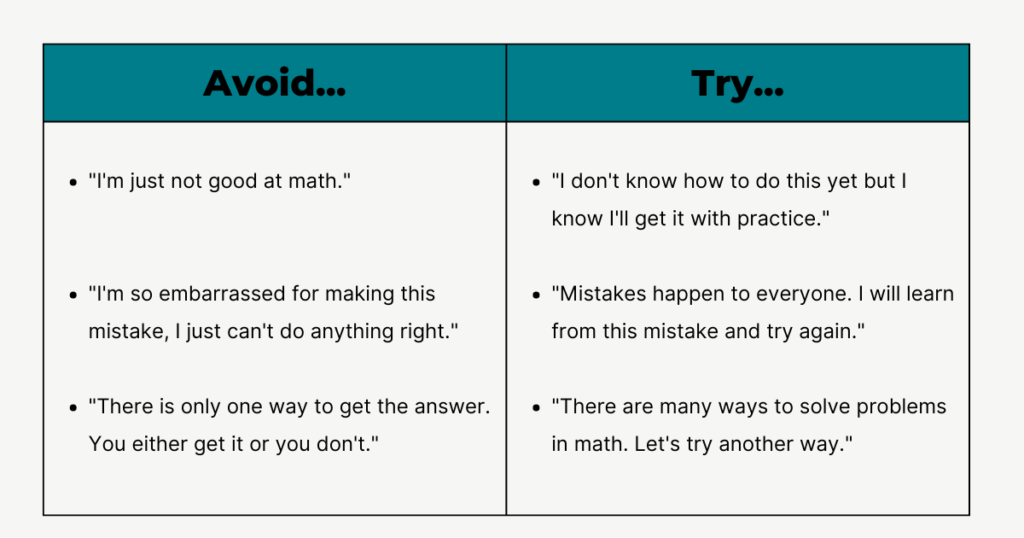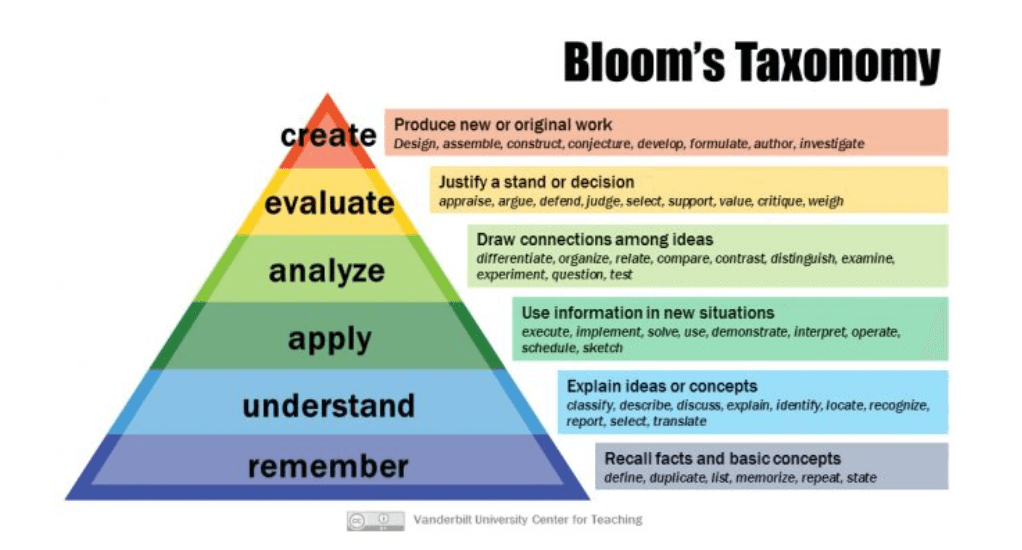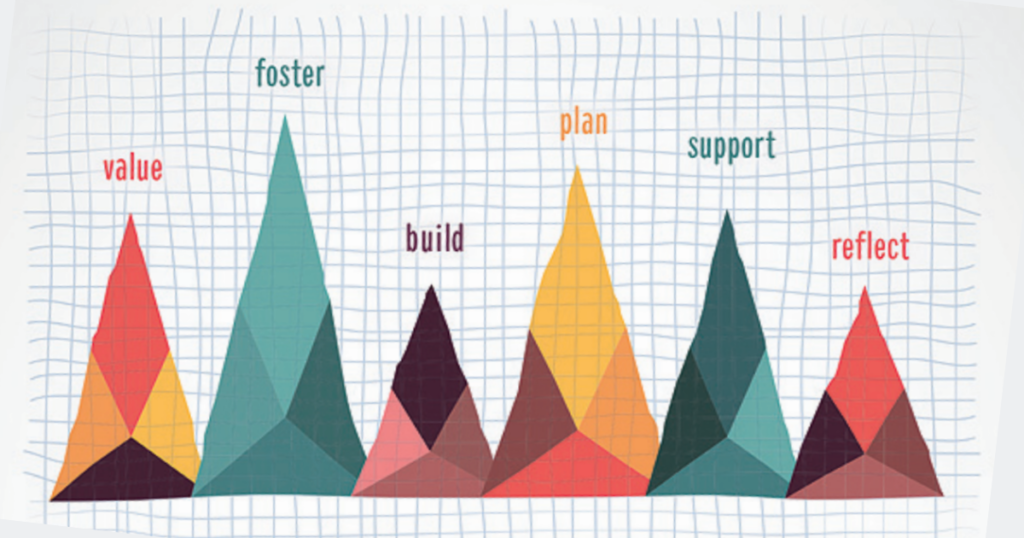Some of the consistent difficulties that ALL educators are confronted with include challenging behaviors and decreased motivation. It can be overwhelming to think these issues can never change. Enter a growth mindset. A growth mindset is a concept that people believe their basic abilities can be developed through dedicated practice.
Currently, educators are faced with turning their own post-pandemic challenges into classrooms that foster both learning and compassion. As the excitement of the start of a new school year begins to wear off and the school year is in full swing, it is pivotal that we reflect on how we will continue to nurture our student’s growth throughout the school year.
How do we nurture student success in math classrooms while tackling these challenges and closing post-pandemic acdemic gaps?
Research offers us some great suggestions:
- Understanding the Growth Mindset
- Differentiating Instruction
- Aligned Intentional Instruction
- Fostering Productive Struggle
- Purposeful Feedback
Growth Mindset vs. Fixed Mindset
In her book, Mindset: The New Psychology of Success, Carol S. Dweck specifies,
In a growth mindset, people believe that their most basic abilities can be developed through dedication and hard work—brains and talent are just the starting point. This view creates a love of learning and a resilience that is essential for great accomplishment.
Dweck, 2015
A growth mindset strays away from praising results and focuses on praising effort and growth. A fixed mindset is a belief that your talents, abilities, and intelligence are set in stone.

The mindset spectrum is fluid. Individuals may have a growth mindset in situations that align with their interests and strengths. In turn, a growth mindset is more difficult to embrace when individuals’ preconceived knowledge or experiences are challenged. The process of learning is directly impacted by an individual’s mindset.

A teacher with a growth mindset believes everyone has the ability to foster a set of skills and grow if they put in the effort and work through the obstacles. As Dweck states, it takes “dedication and hard work” to nurture accomplishment in others. Indeed, the work begins when we challenge any preconceived ideas about students’ abilities and focus on the process of learning rather than the end result. This will allow you to see the potential in all students.
Use Growth Mindset Language

Additionally, modeling growth mindset language will motivate students to do the same and as a result, they will approach math with confidence, a desire to learn, and curiosity.
Differentiate
Student data drives the design of the Math Workshop. Therefore, it’s pivotal that we differentiate our Math Stations and Guided Math groups to challenge our students at their own levels, whether we have homogeneous or heterogeneous groupings. Differentiation doesn’t mean you have to create three different activities for your students.

CRA Model
In the end, giving your students the opportunity to talk through their math process with the use of tangible tools and drawings gives you a clear understanding of where their misconceptions stem from. It can also provide you a starting point for intervention.
Formative Assessments
Consistent use of formative assessments throughout learning progressions ensures that teachers keep up with students’ understanding of the unit and catch any misconceptions that may arise. This is the first step towards closing the achievement gap in classrooms.

As teachers listen and question, it is important to move away from leading students to the correct answer and instead, simply have them share their reasoning. Consistency with this assessment process leads students to understand that the teacher will not give them the answer, but rather they will expect to hear students’ reasoning and challenge their thinking. Providing opportunities for students to share their mathematical reasoning allows teachers to uncover student knowledge and misconceptions which can guide teachers’ instruction, feedback, and interventions.
Aligned Intentional Instruction
Focus more on students’ conceptual understanding rather than procedural understanding. As a math community, we are straying away from the “I do, We do, You do” model and are moving towards a “They Do, We Discuss, I Show” model. (SanGiovanni, Katt, & Dykema 2020)
As seen in Bloom’s Taxonomy diagram, recalling facts and duplicating work is at the very basic level of students’ understanding.

The Texas Essential Knowledge and Skills (TEKS) uses words such as “create,” “represent,” “analyze,” “interpret,” and “understand,” to match different levels of a student’s understanding. To help students do well and make good lesson plans, it’s important to know what each level of understanding means. As you notice these verbs in the TEKS, take a closer look at the lessons and think about them.
Foster Productive Struggle
Students receiving appropriate challenges experience productive struggle by utilizing their prior knowledge and problem-solving skills when attempting to solve math problems before a procedure is directly taught.

John Sangiovanni suggests that there are six steps to fostering productive struggle in our math classrooms: Value, Foster, Build, Plan, Support, and Reflect. (SanGiovanni, Katt, & Dykema 2020)
- Value productive struggle: Productive Struggle is an essential part of living and learning. A growth mindset comes to life in math lessons in which teachers learn, experience, explore and reflect.
- Foster an identity for productive struggle: Reflect on your own math identity. How is that identity reflected in your lessons? Students should identify their own math identities and share them with the teacher.
- Build a community for productive struggle: Establish norms in your classroom for productive struggle and revisit them throughout the year.
- Plan for a lesson with productive struggle: Select tasks that are the right amount of struggle for your students. Modify tasks to meet your student’s needs and anticipate their responses and misconceptions.
- Support the productive struggle during the lesson: Respond to different kinds of struggle. Honor mistakes and consider when to help or hold back.
- Reflect on the productive struggle: Teachers and students should reflect on their productive struggle experiences. Notice the struggle and reward it.
Beyond being a mere procedure or quest for a solution, math is a journey. Acknowledging and normalizing students’ struggles not only motivates students to take risks in math classrooms but reframes the way students see themselves as active mathematicians and problem solvers in the community.
Purposeful Feedback
Be specific about the type of feedback that is beneficial to each individual student before meeting with them one-on-one. John Hattie describes three types of feedback in the classroom (Hattie, J. 2008):
- Feedback – Giving traditional feedback: “This is how you are doing.”
- Feed forward – Focusing on the future: “Here is how you can accomplish your goal.”
- Feed up – Delivering the “why” and highlighting the purpose.
In this case, stray away from generalizing the feedback that is delivered. Feedback lets students know how to achieve their math goals and how to improve.
Celebrate Effort over Talent
Celebrating the trajectory that students have traveled to meet their learning goals will motivate students to keep taking chances and stay engaged.
Have students track their own progress
Self-motivated students become empowered leaders. Having students track their own progress keeps them accountable for their own growth. The use of heat maps, journal reflections, or a student portfolio are helpful tools for student self-analysis and progress monitoring. Break larger learning goals into small achievable goals.
Understanding the growth mindset, strategically differentiating, aligning math instruction, fostering productive struggle, and giving clear and concise feedback allow students the opportunity to grow in a safe space. Here, they are encouraged to make mistakes and grow as mathematicians.
Interested in learning more about these strategies and how to apply them in your math classroom? ESC Region 13 has a number of ongoing professional development opportunities in math and other subject areas. Visit our math homepage or browse our current workshops to find one that fits your needs.
References
- Dweck, C. S. (2006). Mindset: The new psychology of success. Random House.
- SanGiovanni, Katt, & Dykema (2020). Productive Math Struggle: A 6-Point Action Plan for Fostering Perseverance. Corwin.
- Hattie, J. (2008). Visible learning. Routledge.

Alejandra Gonzalez
Alejandra Gonzalez is an Elementary Math Education Specialist for Education Service Center Region 13 in Austin, Texas.





Add comment